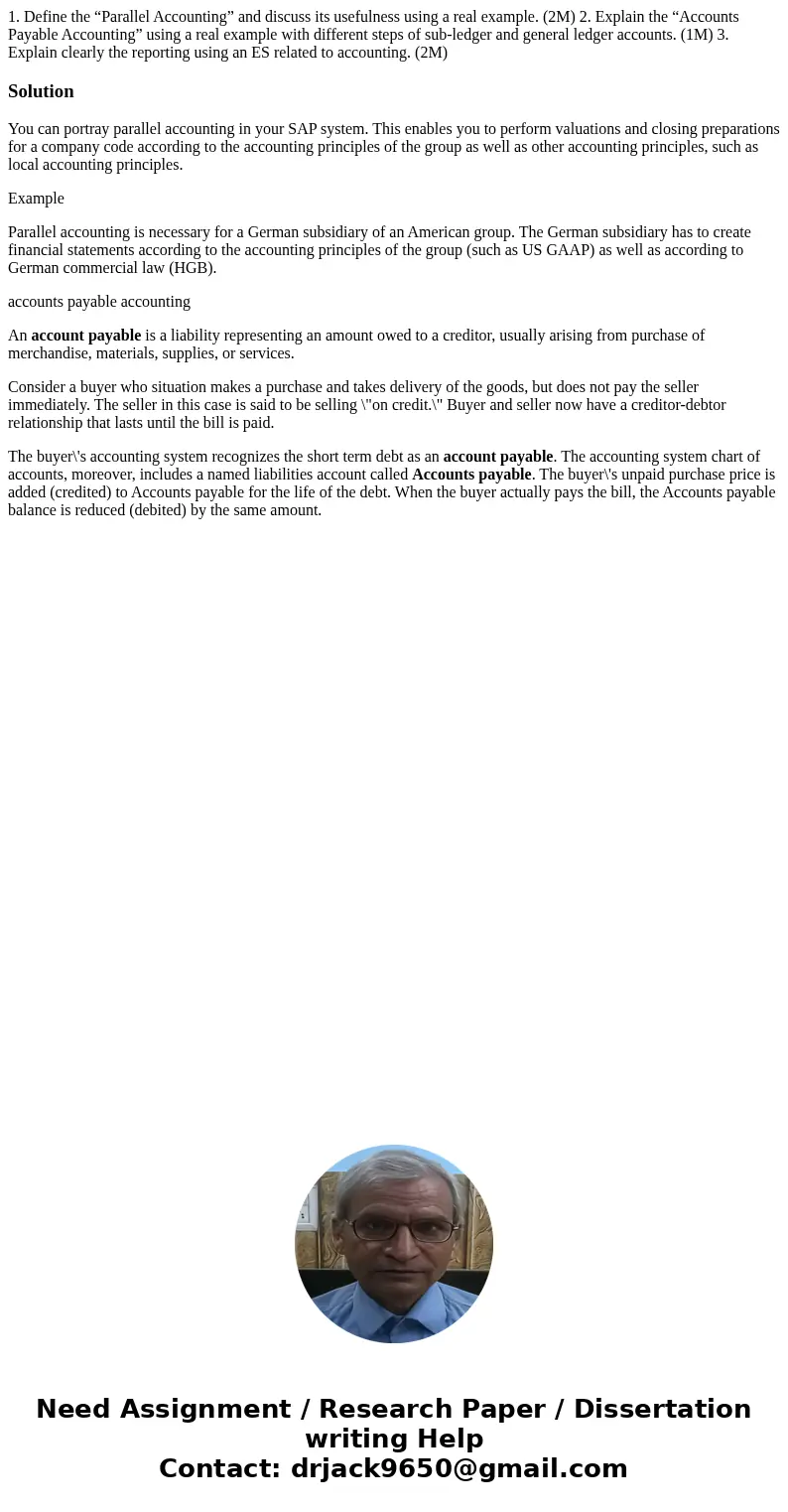1 Define the Parallel Accounting and discuss its usefulness
1. Define the “Parallel Accounting” and discuss its usefulness using a real example. (2M) 2. Explain the “Accounts Payable Accounting” using a real example with different steps of sub-ledger and general ledger accounts. (1M) 3. Explain clearly the reporting using an ES related to accounting. (2M)
Solution
You can portray parallel accounting in your SAP system. This enables you to perform valuations and closing preparations for a company code according to the accounting principles of the group as well as other accounting principles, such as local accounting principles.
Example
Parallel accounting is necessary for a German subsidiary of an American group. The German subsidiary has to create financial statements according to the accounting principles of the group (such as US GAAP) as well as according to German commercial law (HGB).
accounts payable accounting
An account payable is a liability representing an amount owed to a creditor, usually arising from purchase of merchandise, materials, supplies, or services.
Consider a buyer who situation makes a purchase and takes delivery of the goods, but does not pay the seller immediately. The seller in this case is said to be selling \"on credit.\" Buyer and seller now have a creditor-debtor relationship that lasts until the bill is paid.
The buyer\'s accounting system recognizes the short term debt as an account payable. The accounting system chart of accounts, moreover, includes a named liabilities account called Accounts payable. The buyer\'s unpaid purchase price is added (credited) to Accounts payable for the life of the debt. When the buyer actually pays the bill, the Accounts payable balance is reduced (debited) by the same amount.

 Homework Sourse
Homework Sourse